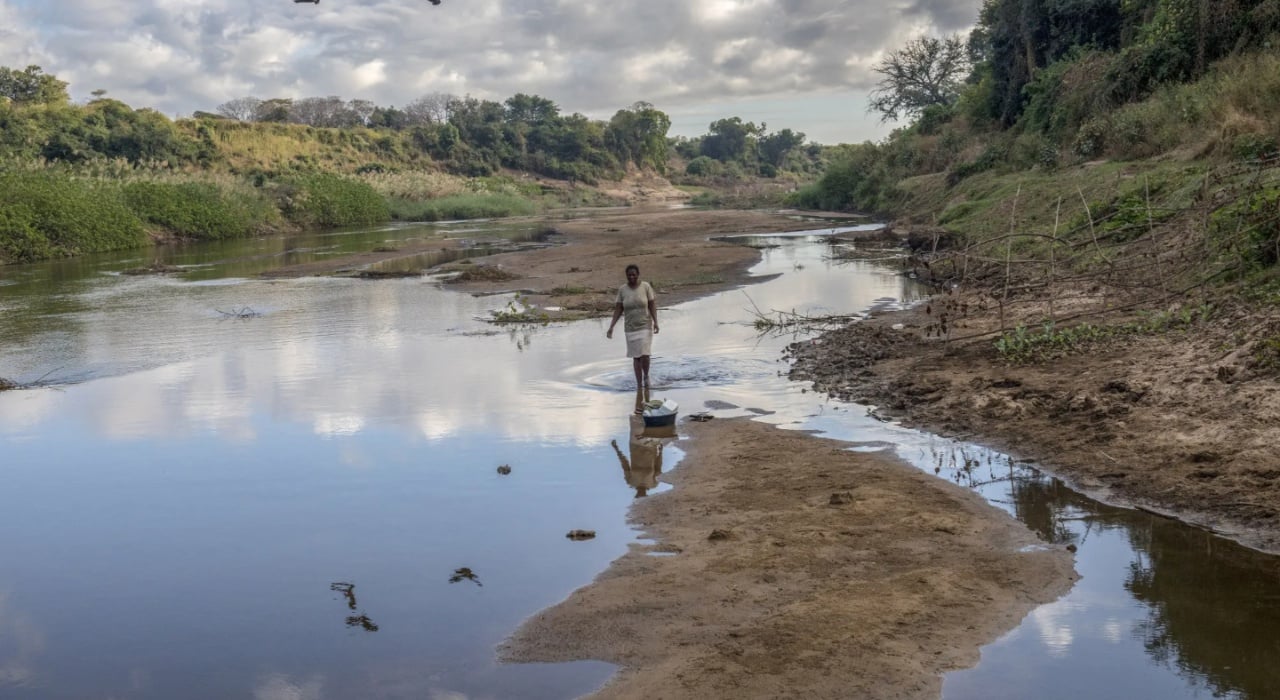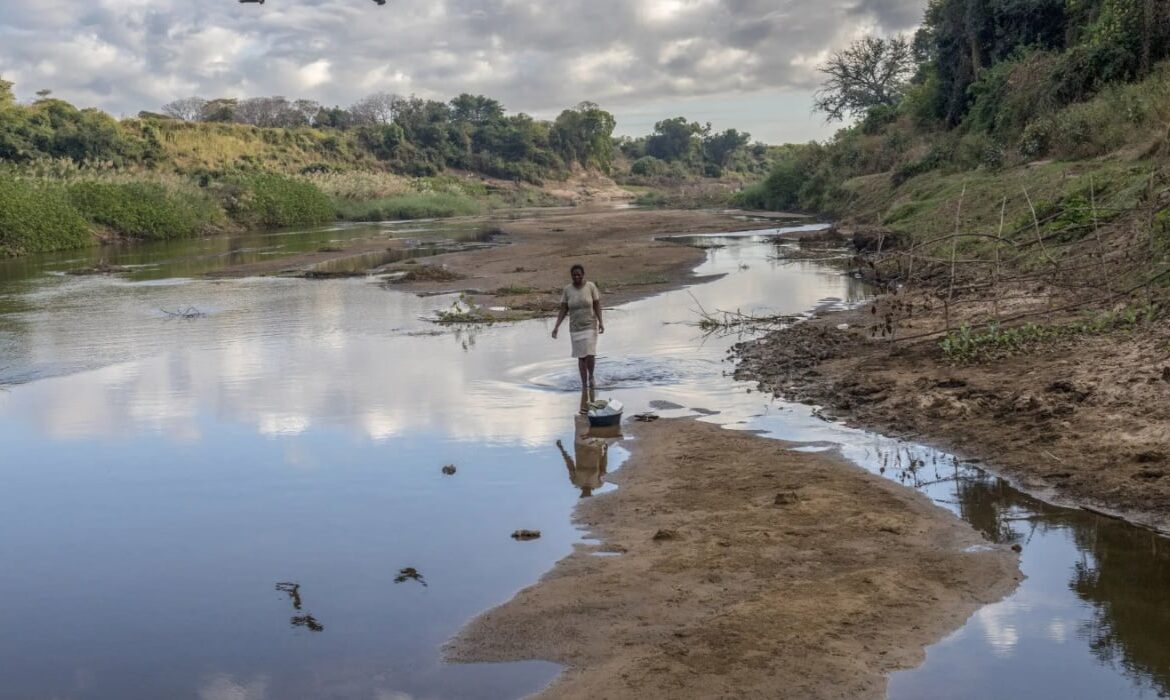What really are Carbon Credits and Markets?

Over the past few years, the term “carbon market” has become increasingly common in Zimbabwe’s economic and environmental discussions. Yet, for many people, it still sounds like a distant or technical concept. In reality, Zimbabwe’s growing carbon market is far more than a policy buzzword — it represents a major opportunity for national development, climate resilience, and investment. By turning the country’s natural assets such as forests, wetlands, and renewable energy resources into measurable environmental credits, Zimbabwe is unlocking new ways to attract investment, create jobs, and promote sustainable growth.
As the world accelerates efforts to combat climate change, carbon credits are emerging as valuable financial tools that reward emission reductions and sustainable practices. Zimbabwe is positioning itself as a regional leader by building a transparent, blockchain-based national registry and transitioning toward a compliance-grade carbon market by 2026. In this article, we break down what carbon credits and markets are, why Zimbabwe’s carbon market matters, and how individuals and investors can take part in this exciting new opportunity.
Carbon credits are a type of environmental “currency” created to provide financial incentive for reducing greenhouse gas emissions. In simple terms: doing something that prevents or removes one tonne of carbon dioxide-equivalent (or more of other greenhouse gases) generates a “credit.” That credit can then be sold or traded to someone who needs to offset emissions, or who wants to claim the environmental benefit.
For example, imagine a farmer in rural Zimbabwe – Lupane for instance, who plants and protects a large area of trees. Those trees naturally absorb carbon dioxide from the air, reducing pollution. A company in Harare – Delta for instance, on the other hand, might produce unavoidable emissions through its operations. Instead of ignoring its environmental impact, Delta can buy carbon credits from the Mr Ndlovu in Lupane — essentially paying for the carbon the trees remove from the atmosphere. That way, Mr Ndlovu in Lupane earns income for protecting the forest, and Delta on the other hand balances out its emissions. It’s a win-win situation that supports livelihoods, encourages conservation, and helps fight climate change.
Carbon markets are the systems – legal, regulatory and commercial – through which these credits are issued, tracked, traded, retired and used. They come in different types:
Voluntary carbon markets: businesses, organisations or individuals choose to buy credits to meet corporate social responsibility goals or “net-zero” pledges.
Compliance carbon markets: built into regulation, where firms/countries must meet legally binding emissions limits and may use credits/offsets under certain rules.
Under the Paris Agreement (for example), mechanisms such as Article 6 allow countries to trade or use internationally transferred mitigation outcomes (ITMOs) with “corresponding adjustments” so that emissions reductions aren’t double-counted.
In Zimbabwe’s case, the government has recently strengthened regulatory frameworks, created a national registry and aligned local rules with the international regime (see next section). For example, under Zimbabwe Carbon Markets Authority (ZiCMA) regulations, the newly-established Zimbabwe Carbon Registry (ZCR) will record and manage issuance, transfers and retirements of credits, prevent double counting and allow international transfers.
It is essential to emphasise: a carbon credit is only as good as its credibility— that is, the emissions reduction or removal must be real, measurable, additional (that is, wouldn’t have happened without the credit), permanent (or with mitigation of reversal risk), and tracked so that it cannot be claimed by more than one entity. This matters for investors as well as buyers of credits.
Zimbabwe’s Market: Why It’s Poised For Growth
Here are several reasons why Zimbabwe presents a compelling opportunity, and what makes its carbon-credit market distinctive:
- A strong regulatory framework
Zimbabwe has made major recent reforms:
The Carbon Trading (General) Regulations (Statutory Instrument 48 of 2025) formalise the national registry (ZCR) and the authority (ZiCMA) to accredit participants, license auditors, verify projects, issue credits and manage international transfers.
The system mandates corresponding adjustments for internationally transferred credits to prevent double counting — aligning with Article 6 requirements.
The ZCR is described as a blockchain-enabled national registry, offering fully traceable transactions: issuance, transfers and retirements.
Legal accountability is in place: trading unregistered “credits” or transferring without authorisation is a criminal offence (fine or up to 12 months imprisonment).
These reforms reduce regulatory risk, improve transparency and credibility—and for investors that matters
2. Clear benefit-sharing and national involvement
The regulations outline how revenues from carbon projects are shared: for example in earlier versions 70% to the project proponent and 30% to the Government for national climate/transaction accounts. There are also provisions for buffer accounts (e.g., 2% of issuance) and mandatory retirements (e.g., 1%) to protect integrity. This shows that the State is actively granting rights but also safeguards are in place, which helps secure investor confidence.
3. Natural & socio-economic potential
Zimbabwe has abundant natural resources (forests, peatlands, conservation areas, renewable energy potential, etc) and many projects in forestry/conservation already generating credits. For instance it was estimated that by October 2024 Zimbabwe had generated ~31.3 million credits from 26 projects.
This means opportunities for new mitigation activities are large—giving early-entrants the chance to lock in favourable terms.
4. Market differentiation and “compliance-eligible” credits
Because Zimbabwe’s framework is compliant with international rules (Article 6 etc) and has a robust registry, the credits issued here can be “compliance-eligible” (that is, acceptable for regulated markets or for corporate buyers wanting high-integrity credits). In turn such credits typically command a premium compared to lower-quality credits. For example, the article you suggested mentions that Zambia is transitioning from voluntary to compliance-only. Whilst I couldn’t locate definitive public text that Zimbabwe is the first to phase out voluntary credits entirely by 2026, Zimbabwe’s move to a compliance-focused regime is evident through its recent regulatory tightening.
5. Investment attraction & world-class registry
With the blockchain-enabled ZCR, and legal property-rights style treatment of credits as proprietary assets, the investment case improves (investors like clear ownership, transferability, enforceability). For example: “credits registered through the ZCR are treated as proprietary assets and may be freely transacted by their holders.”
In short: fewer doubts about “who owns what”, transparency of transfers, traceability and regulatory backing — all important for investors.
Why Should I Invest in Zimbabwe’s Carbon Market?
From an investor’s perspective (whether you are a buyer of credits, a project developer, an auditor, or simply someone looking to participate), here’s why Zimbabwe stands out:
Return potential: High-quality compliance-eligible credits often sell at higher prices than generic voluntary credits. Since Zimbabwe is aligning with compliance markets, the premium may be favourable.
First-mover and growth potential: The market is still emerging. Early entrants may secure favourable terms, better project sites, partnerships, off-take deals.
Dual benefits: Not only financial returns from credit sales, but social & environmental benefits (community development, job creation, renewables, forestry) which increasingly matter to buyers and investors.
Legal/regulatory clarity: With the new regulations, a national registry, and property-right treatment of credits (i.e., you can hold, transfer, retire) the regulatory risk is lower relative to ad-hoc or poorly regulated markets.
Global demand tailwinds: With many companies and countries pledging net-zero and compliance regimes tightening globally, demand for high-integrity credits is likely to grow. That works in Zimbabwe’s favour if the credits meet integrity standards.
Fungibility and transferability: Because Zimbabwe’s registry is blockchain-enabled, credits can be transparently transferred, retired and tracked—making them more credible and market-friendly globally.
Of course, as with any investment, risks remain (project-specific, regulatory changes, market price fluctuations, verification delays). But Zimbabwe offers a compelling blend of natural endowment + regulatory backing + global interest.
How Do I Invest in Zimbabwe’s Carbon Market?
If you are interested in getting involved, here is a step-by-step guide (tailored for Zimbabweans):
Decide your role: Are you (a) a buyer/end-user of credits (to retire/offset emissions)? (b) a project developer generating credits from forestry, renewables, other mitigation actions? (c) an auditor/ verifier (Designated Operational Entity) checking projects?
Register with the national authority: In Zimbabwe you must register with the Zimbabwe Carbon Markets Authority (ZiCMA). For example:
Project Developers obtain a Developer Identification Number (DIN) while General Account Holders (buyers/traders) obtain a Registry Identification Number (RIN) and Auditors/Verifiers (DOEs) obtain AIN.
For project developers:
Submit a Project Idea Note (PIN) plus a Non-Permanence Risk Assessment and Mitigation Plan. Ensure your project meets eligibility: must be aligned with a recognized carbon-crediting standard or under Article 6 mechanisms, meet social & environmental safeguards, be technically viable. Register your project on the ZCR. Under Section 12 of the Regulations only registered projects can issue credits.
Issuance of credits: Once the project is validated/verified by an accredited DOE, you request issuance of credits via the ZCR or an approved registry; the credits receive a Certificate of Credit Issuance, are serialised, and then you can sell/transfer them.
Trading/transfer/retirement: Credits can be transferred (inside Zimbabwe’s registry, or internationally if authorised) and then retired (if used for offset). The ZCR handles the record-keeping and corresponding adjustments if needed.
Monitor and comply: If you are a developer you must continue to monitor emissions reductions/removals, report, verify, and maintain the project’s integrity; non-compliance can lead to suspension or revocation of registration/licence.Essentially: register → develop/validate → issue credits → trade/retire → monitor.
How Can Zimbabwean Carbon Credits Be Used for Voluntary Transactions and Offsets?
Even though the regulatory focus is shifting towards compliance markets, credits from Zimbabwe can still be used in voluntary markets — but with some caveats and opportunities:
If you are a business or individual wanting to offset your emissions voluntarily, you can purchase high-quality credits from Zimbabwe-based projects (assuming they are labelled accordingly, verified, and registered in the ZCR).
Because Zimbabwe now emphasises compliance and international transferability (with corresponding adjustments), credits from Zimbabwe may carry a premium (higher integrity) — so voluntary buyers may view them as more valuable or “gold-standard”.
Projects should clearly indicate whether the credit is issued for voluntary use or compliance use (or both) — ensuring that there is no double counting, no overlapping claims, and that the credit is retired properly once used.
As a seller or project developer, you may market your credits for voluntary offset buyers (e.g., corporations with net-zero goals) but you will want to emphasise the regulatory backing, national registry serialisation, traceability and community/safeguard benefits to make them attractive.
If you intend to use credits for compliance purposes (for example, meeting obligations under a regulated scheme, or international transfer to meet a national target), you will want credits that have corresponding adjustments and meet recognised standards. Zimbabwe is now providing that pathway.
Key Risks and Things to Watch out for
While the upside is strong, it’s always wise to be aware of the risks:
Project risk: The underlying mitigation activity may fail (e.g., forest fire, regression, policy change, lack of permanence). A buffer account helps, but risk remains.
Regulatory/policy risk: Even though Zimbabwe has strong framework now, laws can change; investor protections may still develop.
Market risk: Carbon-credit prices can fluctuate, demand may shift (especially in voluntary markets).
Quality/integrity risk: Not all credits are created equal. Buyers increasingly seek high-integrity credits (additionality, robust verification, community benefit, etc.). Poor-quality credits may be discounted or rejected.
Local stakeholder risk: Community impacts, land rights, benefit-sharing and safeguard issues must be managed well, else reputational/investment issues may arise.
Awareness and capacity risk: Although regulation exists, local implementation, monitoring and enforcement may still be building. Some articles suggest awareness is low and infrastructure is still developing.
Key Takeaways from this article
For anyone looking to invest in carbon markets, Zimbabwe offers a particularly exciting proposition: natural resource potential, strong regulatory reforms, an innovative blockchain-enabled registry, and international compliance alignment. Whether you are developing a mitigation project, buying credits for offset, or providing verification services — this market is opening up.
However, as with any emerging market, you’ll want to do your homework: inspect project documentation, verify the standard used, check the registration status, ensure the credits are issued via the ZCR, and understand the buyer market and price dynamics. Done well, Zimbabwe could be a strategic part of a sustainable investment portfolio — delivering both returns and climate impact.
MORE TO READ: FAO Zimbabwe Seeks National Environmental and Social Safeguarding Specialist to Support Food Security Initiatives
Follow Us on Google News for Immediate Updates
The post Zimbabwe Booming Carbon Market: How and Why To Invest appeared first on iHarare News.












